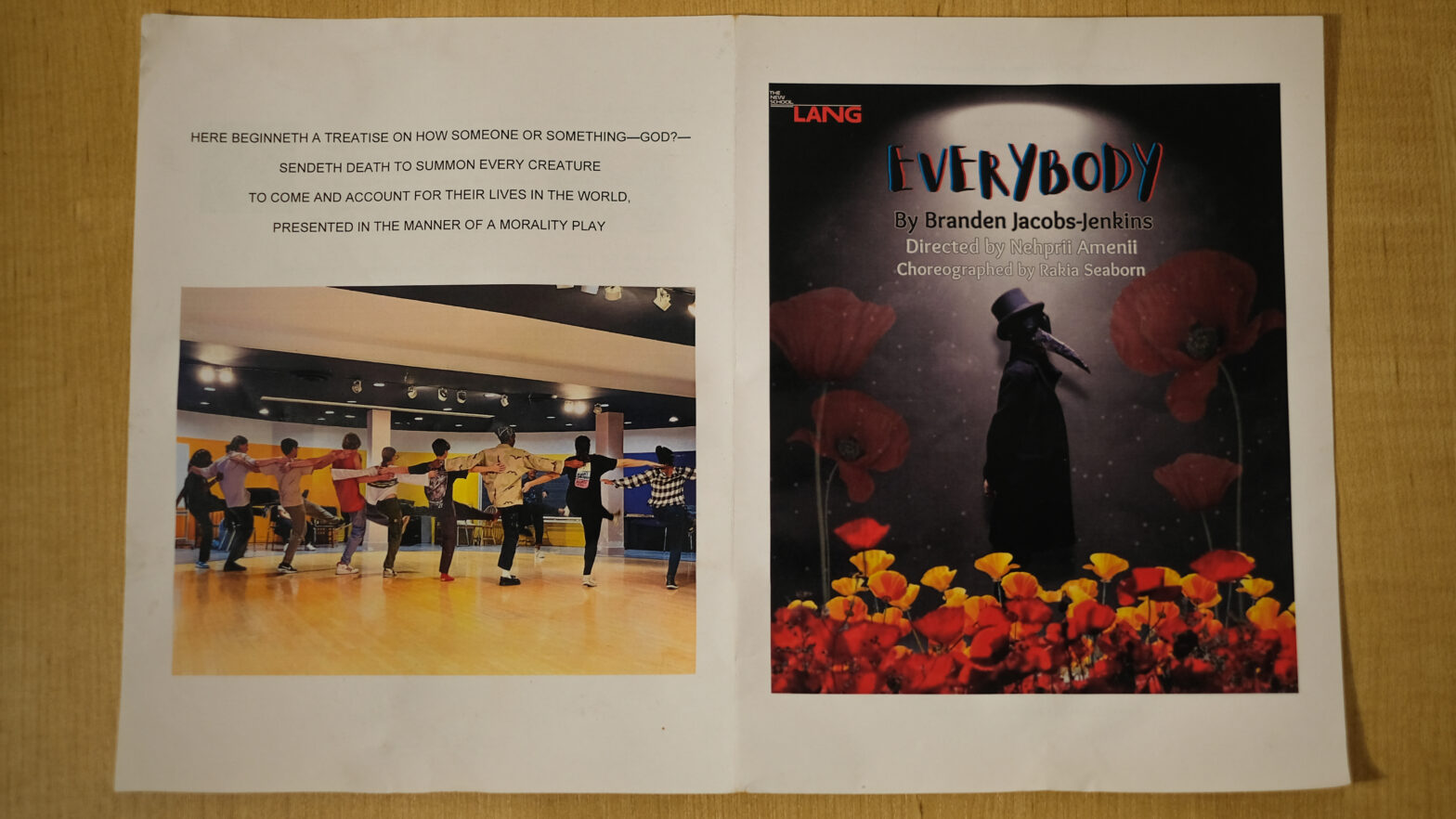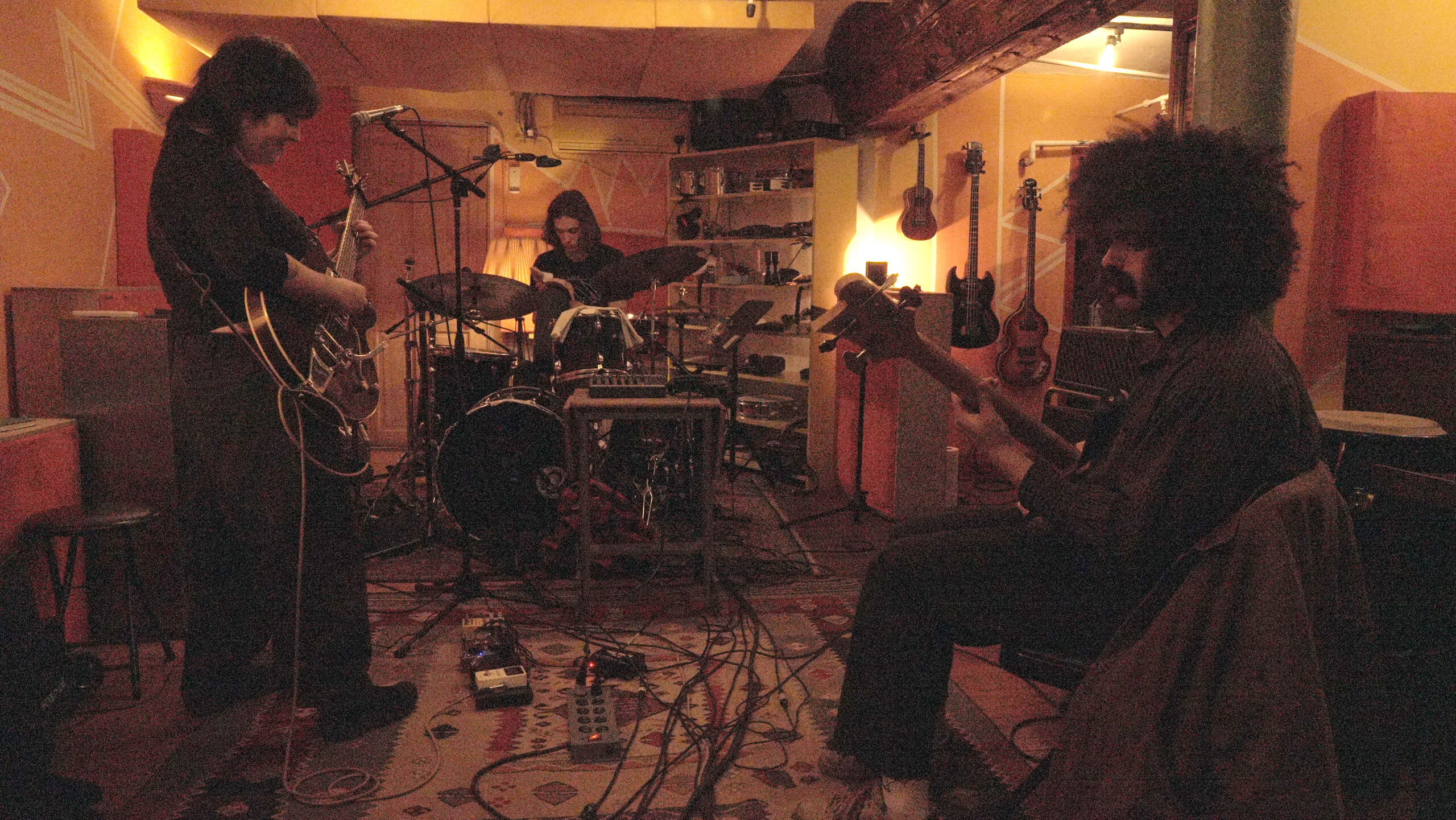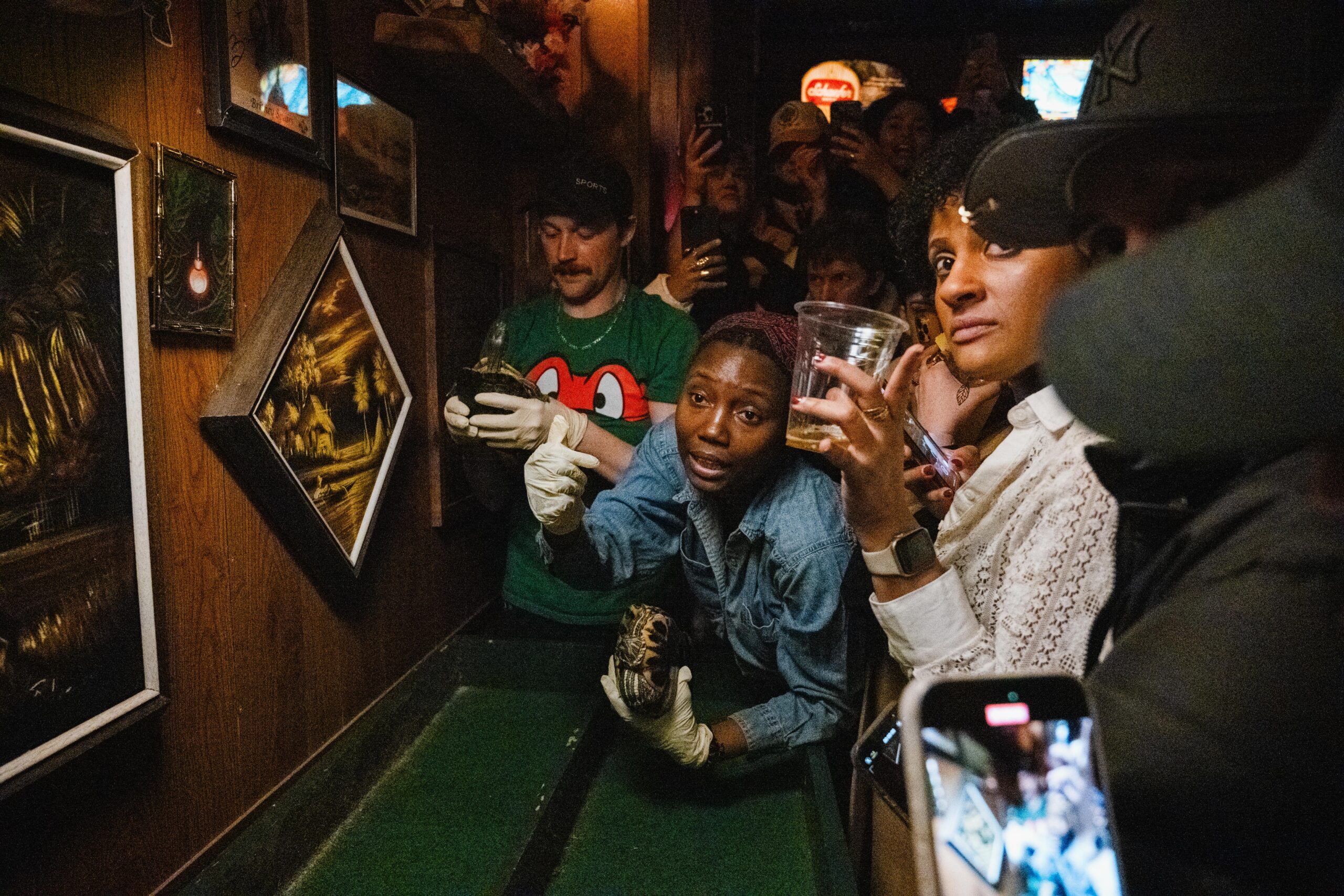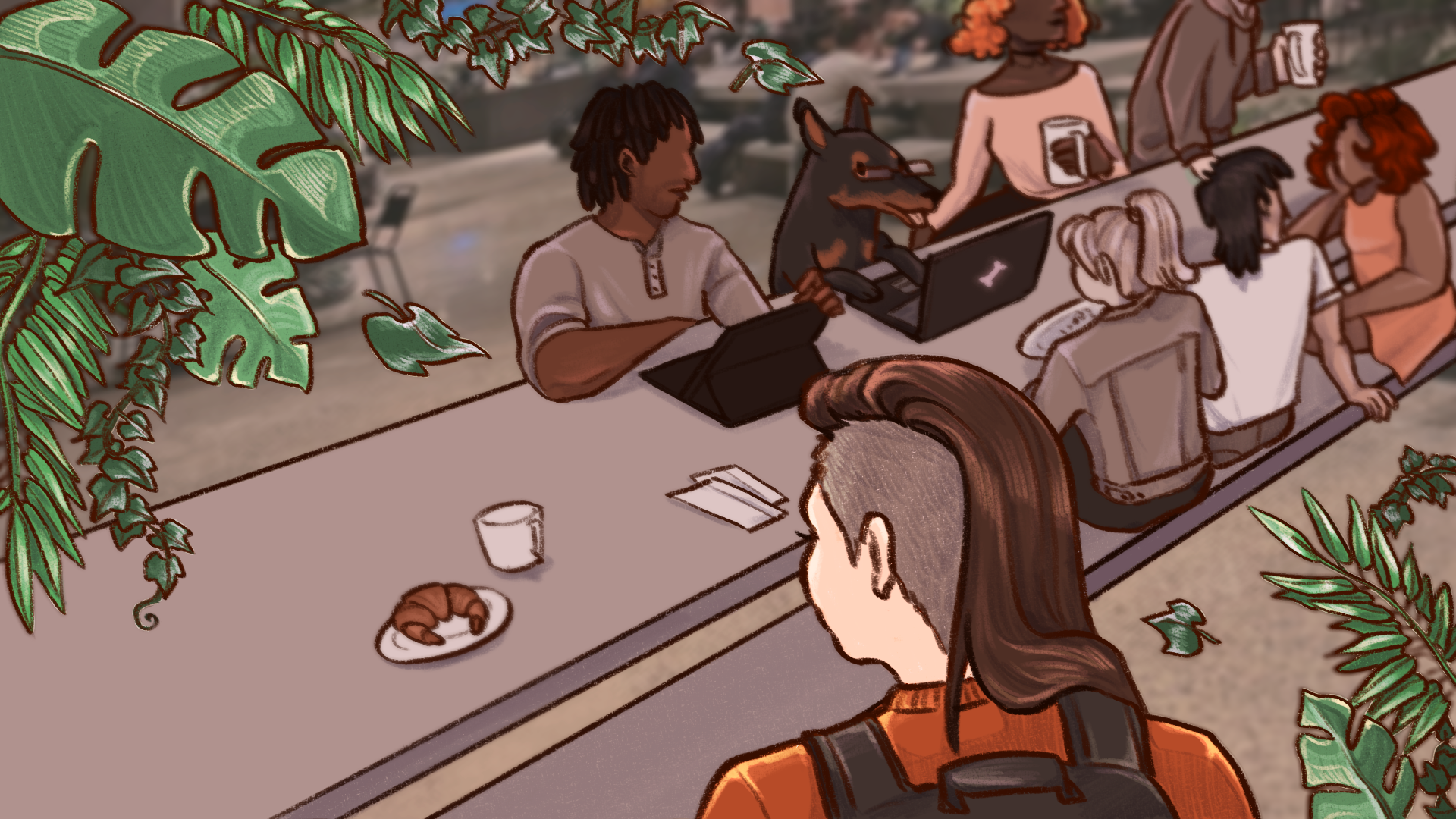Everybody, a Eugene Lang College of Liberal Arts production, asks its audience: when you die, what do you take with you? The answer bounds between elements of dance, live music, puppetry, and voice-over, as the production uses humor and passion to explore questions of life and death.
Written by award-winning playwright Branden Jacobs-Jenkins, Everybody is a modern rendition of the 15th-century morality play Everyman. It follows one central character, Everybody, through a metaphysical journey of self-discovery as they near death and anticipate their appearance in front of God. The Lang production was directed by Brooklyn-based director, playwright, and puppeteer Nehprii Amenii and choreographed by Rakia Seaborn, a frequent collaborator of Amenii’s. The play runs through Sunday, Nov. 24, at Mabou Mines Theater on East Ninth Street and First Avenue.
The play opens with an extended monologue from the character God, played by Lang student Merline Barreau, in which they are alone on the stage, systematically pulling bright flowers from unknown places in their tuxedo. This compelling performance by Barreau was followed by a moody song on the acoustic guitar from the character called Death, charismatically portrayed by Lang student Harrison Dunstan, wearing a flashy teal suit jacket and glittering silver belt. The grave absurdity of this opening duet set a conversational, philosophical tone for the remaining two hours.
The play was lengthy and attempted to cover a wide range of subjects — namely, the entire spectrum of human existence. This was an ambitious effort on Jacob-Jenkins’s behalf, and the script often doubled back on itself, repeating the muddled, intangible concepts of friendship, family, ownership, and love.
Lang’s adaptation combats this slog by infusing the script with creative staging, energetic dance numbers (including a couple of acts set to Beyoncé), live musical interludes, and performances that are anything but difficult to sit through. Each character shines in their individual moments in the spotlight, yet the production is supported by a strong ensemble coalescing in a consistent chorus.
With no set pieces on stage, the cast bears a significant responsibility for the atmosphere of the production. They are assisted by immersive sounds, moody lighting design, and a host of puppets and moving props that give the play its three-dimensional, bursting-out-of-the-box feel. As cast members roll, crawl, swim, and dance across the stage, whole worlds are constructed in front of the audience.
Everybody speaks to the audience directly. At times, cast members turn to attendees with a tongue-in-cheek remark or clamber over the plush seats, allowing each viewer to be a part of the narrative. The spotlight turned away from the stage and onto the audience, reinforcing the play’s theme of life and death as universal — sparing no one.
The single thread of stability woven throughout the production is the central character, Everybody, played by Lang student Aidan Cummings. This performance is striking — Cummings balances humor and raw emotion, crafting a character that lives up to their name — representative of humanity’s collective fears and desires while remaining an authentic, visceral touchstone among the chaos and color of our earthly burdens.
Although the production is shaky on its feet in certain moments, attempting to balance aspects of fictional narrative, breaking the fourth wall, and performance art of many mediums, the combined effect is a charming, engaging representation of life coming to an end.
The play closes with a poignant meditation on the role of love in our lives and deaths. As the central character questions midway through the odyssey, that is, Everybody, “Was that a dream, or was that a vision?” Attendees are left to wonder the same, grappling with the questions Everybody poses about the lives we lead before facing our inevitable end.








Leave a Reply